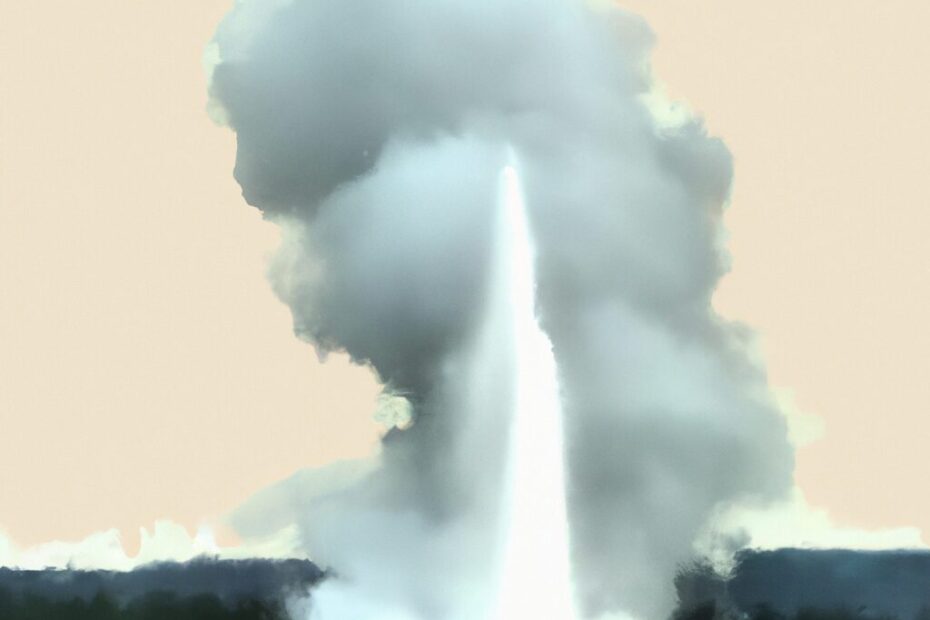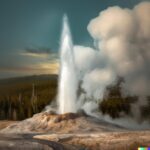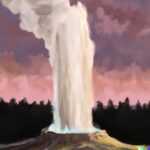Are you fascinated by the natural wonders of the world? Yellowstone National Park is home to some of the most spectacular geysers on the planet, each with its own unique eruption schedule. From the iconic Old Faithful Geyser to the impressive Steamboat Geyser, there is no shortage of geothermal activity to witness.
In this article, we will explore what makes Yellowstone National Park special, the eruption schedules of its most famous geysers, and how visitors can plan their trip to witness these awe-inspiring displays of nature. So, pack your bags and get ready for an unforgettable adventure!
Full Yellowstone Geyser Eruption Schedule Guide
- Introduction to Yellowstone Geysers
- Predicting Geyser Eruptions:
- Old Faithful Eruption Schedule:
- Eruption Schedules for Other Notable Geysers:
- Tips for Viewing Geyser Eruptions:
- Visiting Yellowstone Geysers: Tips and Recommendations
Key Takeaways:
- Plan your visit in advance by checking the eruption predictions to see the most popular geysers like Old Faithful and Grand Geyser.
- The eruption schedule of Yellowstone National Park geysers is influenced by geological activity, weather conditions, and human interference.
- To catch a glimpse of Yellowstone’s famous geysers, visitors should arrive early and be patient as geyser eruptions can be unpredictable and may have longer intervals between eruptions.
What Are Geysers?
Geysers are natural hot springs that periodically erupt jets of steam and hot water, creating spectacular displays of nature’s power.
This process typically occurs due to the underground water being heated by magma beneath the Earth’s surface, causing it to boil and build pressure until it eventually erupts. The most famous concentration of geysers can be found in Yellowstone National Park, where the iconic Old Faithful geyser attracts millions of visitors each year with its reliable eruptions. Geysers can vary in size and intensity, with some reaching incredible heights of boiling water and steam. They play a vital role in maintaining the balance of thermal features in geothermal areas, providing insights into the Earth’s geological processes.
What Makes Yellowstone National Park Special?
Yellowstone National Park is renowned for its unique geothermal features, including a vast array of geysers that showcase the park’s geological diversity and natural wonders.
What Is the Eruption Schedule of Yellowstone National Park Geysers?
The eruption schedule of Yellowstone National Park geysers varies depending on the geyser, with some like Old Faithful erupting predictably while others have more erratic patterns.
Old Faithful Geyser
Old Faithful Geyser is one of the most famous geysers in Yellowstone National Park, known for its reliable and frequent eruptions that captivate visitors from around the world.
What sets Old Faithful apart is its predictability, with eruptions occurring approximately every 90 minutes, shooting water as high as 185 feet into the air. This remarkable consistency allows park rangers to predict eruptions within a 10-minute window, making it a must-see attraction for tourists. The geyser’s historical significance dates back to its discovery in 1870 during the Washburn-Langford-Doane Expedition, becoming a symbol of Yellowstone National Park’s geological wonders.
Grand Geyser
Grand Geyser is a majestic geyser in Yellowstone National Park, known for its impressive eruptions and intricate geological formations that mesmerize onlookers.
One of the defining characteristics of Grand Geyser is its predictable eruption patterns, making it a must-see attraction for visitors seeking the thrill of witnessing nature’s raw power in action. With eruptions that can reach heights of over 200 feet, Grand Geyser puts on a spectacular show that captivates all those fortunate enough to witness it. Surrounding the geyser, the vibrant and diverse landscape of Yellowstone National Park enhances the overall experience, providing a stunning backdrop against which Grand Geyser’s eruptions unfold.
Castle Geyser
Castle Geyser, with its distinctive cone structure, is a prominent geyser in Yellowstone National Park that showcases the marvels of natural geothermal activity.
Its unique cone shape, resembling that of a castle turret, sets it apart from other geysers in the park. Located in the Upper Geyser Basin, the eruptions of Castle Geyser are characterized by their impressive height and duration, often reaching up to 90 feet high. The geyser’s eruptions are intermittent, occurring approximately every 10-12 hours, making it a popular attraction for visitors eager to witness its powerful display of boiling water and steam.
Daisy Geyser
Daisy Geyser is a charming geyser in Yellowstone National Park known for its delicate eruptions and surrounding beauty that enchant all who witness its displays.
Its eruptions, which are not as forceful as some of its neighbors, create a mesmerizing spectacle as the hot water gracefully dances into the air, forming intricate patterns against the backdrop of the park’s vibrant landscape.
The geyser’s surroundings are a picture-perfect blend of colorful wildflowers, lush greenery, and bubbling thermal features, making it a serene spot to admire nature’s wonders.
Visitors to Yellowstone National Park often find themselves captivated by the charm of Daisy Geyser, drawn in by its serene allure that offers a peaceful retreat in the midst of the park’s bustling geothermal activity.
Riverside Geyser
Riverside Geyser, with its picturesque location along the Firehole River, is a stunning geyser in Yellowstone National Park that offers a serene and captivating eruption experience.
The geyser’s proximity to the tranquil Firehole River enhances its allure, providing a soothing backdrop to its majestic eruptions. Visitors eagerly await the predictable displays, typically every 6 to 7 hours, marveling at the impressive water and steam reaching heights of up to 75 feet. The surrounding landscape, dotted with vibrant geothermal features, frames the geyser in a postcard-worthy vista, creating a memorable and enchanting scene for onlookers.
Great Fountain Geyser
Great Fountain Geyser is a majestic feature of Yellowstone National Park, known for its grand eruptions and expansive pool that captivate visitors with its natural splendor.
Nestled in the picturesque landscapes of the park, Great Fountain Geyser stands out not only for its beauty but also for the scale of its eruptions. The geyser can reach heights of up to 200 feet during its powerful displays, sending plumes of scalding water and steam into the sky, creating a mesmerizing sight for onlookers. Its large pool, reflecting the surrounding beauty, adds to the allure, drawing in visitors from all over the world who come to witness nature’s raw power in action.
Beehive Geyser
Beehive Geyser, named for its cone resembling a beehive, is a fascinating geyser in Yellowstone National Park that showcases the intricate beauty of geothermal activity.
This unique geological formation is known for its cone-shaped structure, which stands out among the various geysers in the park. The cone of Beehive Geyser can reach impressive heights, and its eruptions are unpredictable yet thrilling to witness. Visitors are often captivated by the rhythmic burst of water and steam, creating a mesmerizing display against the backdrop of the park’s natural wonders. The geyser’s eruption patterns are irregular, adding to the excitement and anticipation for onlookers who gather to observe this natural spectacle.
Lion Geyser
Lion Geyser, with its fierce eruptions and majestic presence, is a captivating geyser in Yellowstone National Park that commands attention with its powerful displays.
Visitors marvel at the sheer force behind the eruptions of Lion Geyser, as scalding water shoots high into the sky in a mesmerizing spectacle. The visual impact is astounding, with steam billowing against the backdrop of the park’s natural beauty. The roaring sounds that accompany each eruption add to the awe-inspiring experience, creating a sensory overload that leaves a lasting impression on all who witness it. Tourists often find themselves drawn back to Lion Geyser, eager to witness its raw power once again.
Sawmill Geyser
Sawmill Geyser, named for its resemblance to a sawmill’s circular saw, is an intriguing geyser in Yellowstone National Park that offers a distinctive and memorable eruption display.
When this unique geyser erupts, it spouts water up to 20 feet high in a circular pattern, mimicking the motion of a sawmill’s blade. The eruption intervals of Sawmill Geyser are irregular, adding an element of surprise for visitors waiting to witness its spectacular display.
Visitors often marvel at the geyser’s intricate dance of water and steam, creating a mesmerizing spectacle against the backdrop of Yellowstone’s natural beauty. Exploring the area around Sawmill Geyser allows visitors to experience firsthand the power and beauty of one of nature’s most fascinating phenomena, making it a must-see attraction in the park.
Steamboat Geyser
Steamboat Geyser, the world’s tallest active geyser, is a mesmerizing natural wonder in Yellowstone National Park that enthralls spectators with its towering eruptions.
This magnificent geyser can shoot water up to 300 feet into the air during its eruptions, making it a spectacle unlike any other in the park. The incredible display is accompanied by a thunderous roar that echoes throughout the area, leaving visitors in awe of the raw power of nature.
Unlike predictable geysers that erupt at regular intervals, Steamboat Geyser is known for its irregular and infrequent eruptions, adding to its mystique and unpredictability. Scientists continue to study this geological marvel to understand the underlying processes that drive its sporadic activity.
What Factors Affect the Eruption Schedule of Yellowstone National Park Geysers?
The eruption schedule of Yellowstone National Park geysers is influenced by various factors, including geological activity, weather conditions, and human interference, shaping the rhythm of these natural phenomena.
Geological Activity
Geological activity, such as underground magma movements and thermal energy sources, plays a pivotal role in determining the eruption patterns of geysers in Yellowstone National Park.
When magma rises towards the surface, it heats up the surrounding water and rocks, creating immense pressure beneath the Earth’s crust. This accumulating pressure eventually leads to the explosive release of steam and water, resulting in the iconic eruptions we witness in places like Yellowstone National Park. The interplay of these intricate subsurface processes, combined with the unique geology of the area, gives rise to the mesmerizing spectacle of geysers erupting with immense force and splendor.
Weather Conditions
Weather conditions, including temperature fluctuations and precipitation levels, can impact the eruption behaviors of geysers in Yellowstone National Park, adding a layer of unpredictability to their schedules.
Temperature plays a crucial role in geyser activity, as extreme cold can freeze the geothermal systems, causing delays in eruptions, while excessive heat can alter the pressure dynamics underground, affecting the regularity of eruptions.
The amount of rainfall can influence the water levels within the geysers, impacting the pressure build-up necessary for eruptions to occur, leading to variations in eruption intervals.
The synergy between temperature fluctuations and precipitation levels creates a delicate balance that defines the rhythm of geyser eruptions in Yellowstone National Park.
Human Interference
Human interference, such as altering natural water flow or introducing foreign objects, can disrupt the eruption regularity of geysers in Yellowstone National Park, underscoring the delicate balance between nature and human presence.
The impacts of these disturbances on geyser behavior can be far-reaching, affecting not only the geothermal dynamics but also the surrounding ecosystem. When the natural flow of geysers is tampered with, it can lead to unpredictable eruptions or even permanent damage to these unique features. Conservation efforts in Yellowstone National Park strive to educate visitors on the importance of respecting and preserving these natural wonders.
Preserving the integrity of geothermal systems is crucial not only for the park’s biodiversity but also for maintaining the geological balance of the region.
How Can Visitors Plan Their Trip to See Geyser Eruptions?
Visitors can enhance their Yellowstone National Park experience by planning to witness geyser eruptions through strategic scheduling and utilizing eruption prediction resources.
Check the Eruption Predictions
Checking geyser eruption predictions provided by park authorities or online resources can help visitors plan their itinerary and maximize the chances of witnessing spectacular geyser displays.
By utilizing official sources for geyser eruption predictions, visitors can avoid disappointment from missed eruptions or long waits. Having accurate information at hand enables them to strategically plan their Yellowstone National Park visit, ensuring they are at the right place at the right time. This proactive approach not only enhances the overall trip experience but also allows visitors to witness the breathtaking natural phenomenon Yellowstone National Park is renowned for.
Arrive Early
Arriving early at geyser basins allows visitors to secure prime viewing spots and witness the magic of geyser eruptions without the crowds, enhancing the overall experience.
Being in Yellowstone National Park during the early hours not only ensures a peaceful ambiance but also guarantees a front-row seat to nature’s spectacular show. Avoiding the rush by arriving early provides an intimate connection with the geysers, where one can truly appreciate their power and beauty. The serenity of the morning enhances the visual feast as you witness the steam rising against the sunrise hues.
Be Patient
Exercising patience is key when waiting for geyser eruptions, as nature operates on its own timetable, rewarding attentive visitors with awe-inspiring displays of thermal activity.
While impatience may lead to frustration, embracing the tranquility of the surroundings in Yellowstone National Park can turn the waiting period into a serene experience. The primordial beauty of the geothermal features teaches us to slow down and relish the anticipation, knowing that the earth’s forces are at work right beneath our feet. By honing the art of observation, one can witness the subtle signs that herald a forthcoming eruption, heightening the sense of wonder and appreciation for the natural world.
Frequently Asked Questions
What is the eruption schedule for Yellowstone National Park geysers?
The eruption schedule for Yellowstone National Park geysers varies widely based on each individual geyser. Some geysers erupt frequently, while others only erupt once every few years.
How can I find out when a specific geyser will erupt?
To find out when a specific geyser will erupt, you can check the National Park Service website or ask a ranger at the park. You can also download the GeyserTimes app, which provides real-time eruption predictions for many of the geysers in the park.
Is there a set schedule for Old Faithful’s eruptions?
While Old Faithful has the most predictable eruptions in the park, there is not a set schedule for its eruptions. However, the National Park Service does provide a general prediction of when the next eruption will occur.
What is the best time of day to see geyser eruptions in Yellowstone National Park?
The best time of day to see geyser eruptions in Yellowstone National Park is early in the morning or in the evening. This is when the park is less crowded and the lighting is better for photos.
Can I predict when a geyser will erupt based on its previous eruptions?
While the National Park Service and other resources provide general eruption predictions, it is not always possible to accurately predict when a geyser will erupt. Each eruption is unique and can vary in length and interval.
Are there any geysers in Yellowstone National Park that are currently inactive?
Yes, there are several geysers in Yellowstone National Park that are currently inactive. Due to the ever-changing nature of geysers, it is possible for a geyser to become dormant or even extinct over time.
Last Updated on February 11, 2024 by Jon Waraas – Originally Posted: February 11, 2024

I’m Jon Waraas, and I’ve been navigating the online world since 2006. By day, I’m the proud owner of some eCommerce gems, and by night, I’m the voice behind the adventures on Waraas.Com.
My heart, however, belongs to the wild beauty of Yellowstone National Park. I’ve got a collection of websites dedicated to sharing the wonders of this natural masterpiece. Oh, and did I mention? I’m currently building my own cabin inside the ghost town of Gilmore, Idaho – a cabin with tales to tell!
When I’m not immersed in the digital realm, you’ll find me lacing up my boots for a good hike or setting up camp under the star-studded sky.




